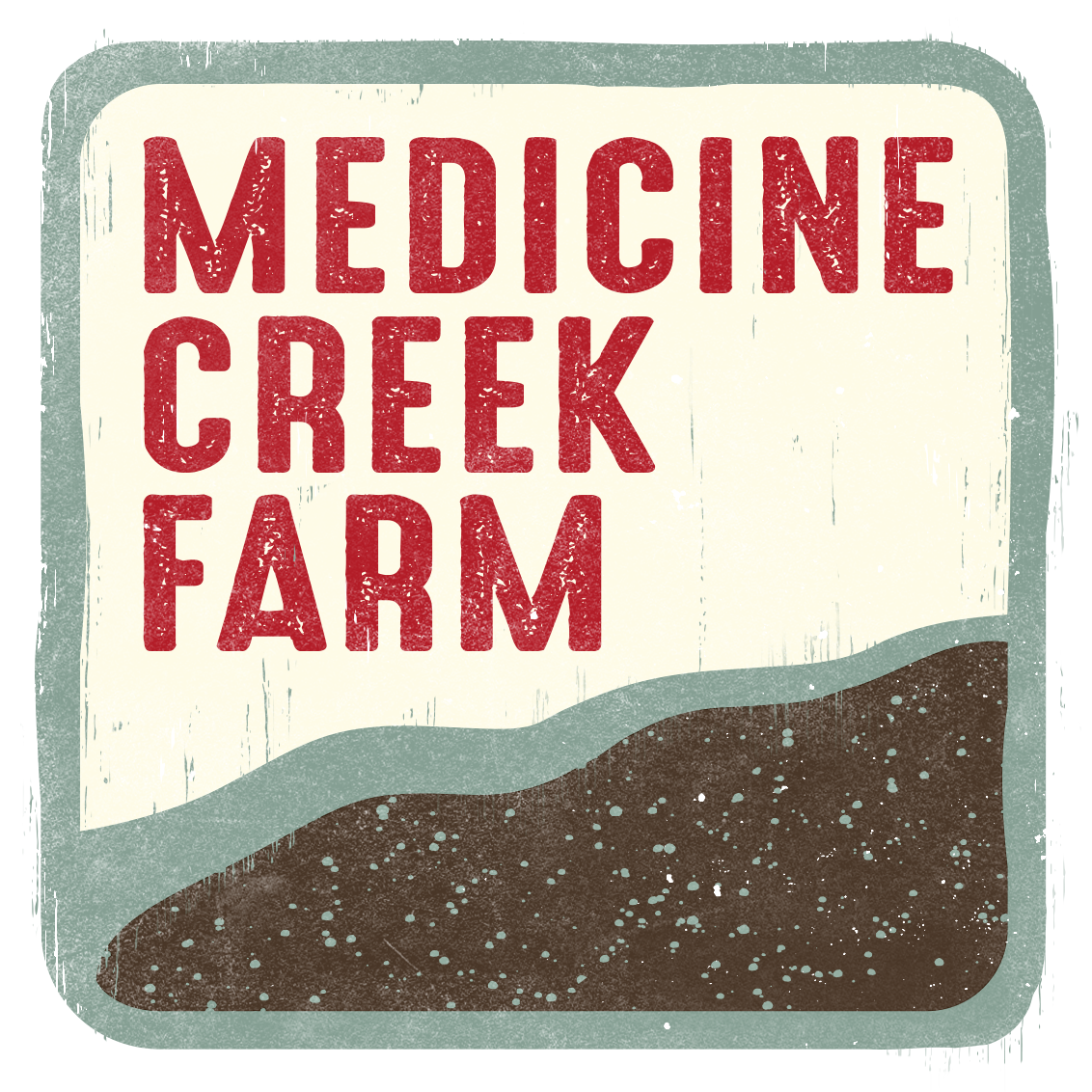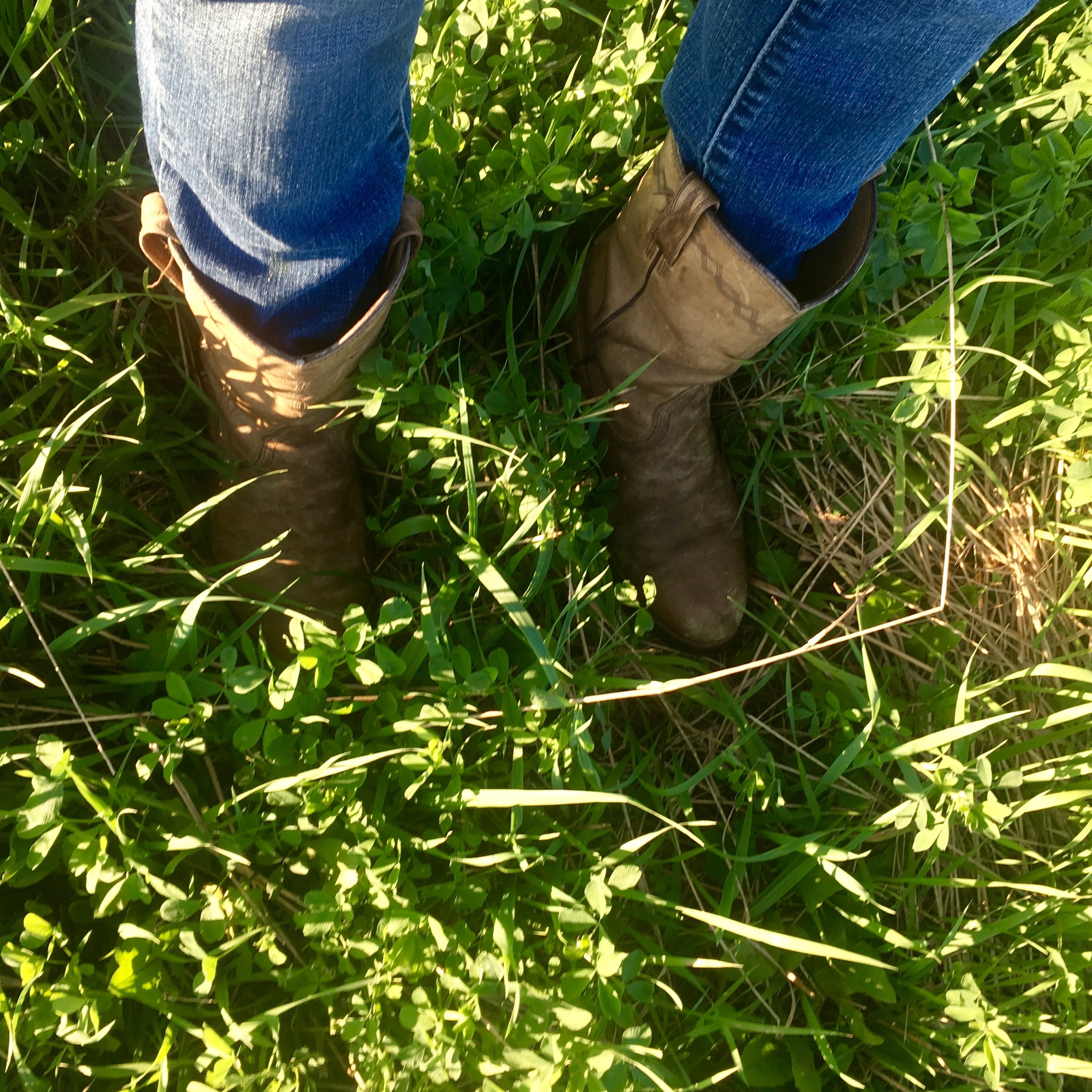the Soil
Why do we care so much about the soil?
To most people, soil science either sounds boring or complicated (maybe both?) but if you bear with us for just a moment, we'd like to explain why you should care about soil health too!
Soil can either be alive or dead. Dead soil has little to no living biology below the surface -- no microbes, no fungi, no little bugs scurrying around.
But in just one handful of living soil, there can be more microorganisms than there are people on earth (that's more than 6 billion)!
In fact, soils host a quarter of our planet's biodiversity.
We often think about the health of the environment above the ground, but very few of us have given much thought to the vast ecosystems in the soil. Yet what goes on under our feet has huge implications for animal health, human health, and the health of our planet.
While scientists have just begun learning about all the symbiotic relationships between soil microbes, they do know that healthy, living soils feed the plants that grow above ground.
It is much more complicated than just the nitrogen, phosphorus, or potassium available to the plant.
Plants that grow in healthy, living soils have more nutrient density, are able to draw up minerals from deep in the earth, and produce the antioxidants that indicate a robust, functioning immune system. And when you eat food from healthy soil, your body benefits!
What's more, soil science is proving that agriculture as practiced conventionally is a massive contributor to climate change.
But regenerative agriculture practices that focus on improving soil health have the ability to sequester massive amounts of CO2 into the soil.
While many modern diets promote limiting meat consumption to help the environment, recent understanding of how soils function indicates the exceptionally important place of livestock in the ecosystem.
When animals are moved quickly through pasture in what is knows as "rotational grazing," they are the key to promoting plant growth and cycling nutrients back into the soil.
Soil, water, plant, and animal -- we are all connected.
Regenerative agriculture is an approach to food and farming that improves and builds topsoil and enhances biodiversity above and below the ground.
The Kiss the Ground Foundation made an excellent video explaining these connections and how regenerative agriculture and grass-based livestock systems sequester carbon from the air into the soil.
The Soil Story reveals how soil can reverse climate change. www.thesoilstory.com
Rotational Grazing
Rotational grazing, sometimes called management-intensive, holistic, adaptive, or planned grazing, is a method of raising grass fed livestock that improves the soil and the grasses that grow in them.
Rather than having one big pasture and putting the animals out to roam freely and eat what they want (known as continuous grazing), this method uses many smaller paddocks within a pasture, only giving the animals access to one paddock at a time.
The animals graze each paddock for a short amount of time--usually just 24-48 hours--before being moved to a new one.
This may take a lot more time and management, but has many benefits to the land and animals.
The idea behind this type of grazing is to mimic wild herds of grazing animals on a prairie or savannah, which due to predator pressure, never stay in one area for long periods of time and are forced to move on to fresh grass.
When livestock only have a small area to graze at a time, they are forced to take a bite of every plant in that paddock instead of only eating their favorite plants. This keeps all the plants on an even playing field so the more palatable plants don't get over-eaten, leaving the weedy plants to thrive and proliferate.
In our view, nothing is a really a "weed" per se, but the problem is when one plant becomes dominant and reduces the diversity of the surrounding grasses. Livestock need diversity in their diet as well!
The other advantage of short-duration paddocks is that the livestock will only have time to take one bite from the top of each plant. This actually stimulates root growth and causes the plant to produce root exudates (a carbohydrate sugar solution) which feed the microorganisms in the soil.
Those organisms return necessary nutrients to the plant in a symbiotic relationship and stimulate a burst of leaf growth above the soil.
However, if a plant gets grazed too short (the animals are allowed to take another bite before the plant has time to regrow), its leaves won't be able to gather enough sunlight for photosynthesis and the plant won't have enough energy for root growth.
It will have less root mass below the ground to hold soil in place (which limits erosion), won't be able to feed the microorganisms there, and won't be able to sequester as much carbon from the air.
Rotational grazing also eliminates the need for synthetic fertilizers or making numerous trips with a manure spreader, as the livestock move evenly throughout the pasture doing the work of tractors for us.
Rotational grazing is the answer to keeping pasture grasses growing vigorously and accessing nutrients from the soil.
The livestock in turn eat a more nutrient-dense diet, making their meat healthier for humans as well.
Interestingly, when the soil and the plants are healthier, it attracts more insect and wildlife above ground too.
Ecosystems thrive in a regenerative agriculture that works with the power of nature to feed us.
Animal Welfare
From an animal welfare perspective, rotational grazing also means we as humans are interacting up-close with our livestock daily. They are familiar and comfortable around us, and know our presence means that fresh grass is on its way (in fact, all our animals are trained to come when we call them).
This comfort level means less stress for the animals when they need to be handled. It also means we are familiar enough to know when an animal is acting out of sorts and may be sick or need attention.
Rather than routinely administering antibiotics or dewormers, we are able to watch closely for signs of illness and only treat those who need it.
Incidentally, animals raised outside on pasture are less likely to get sick! As Covid has clearly demonstrated, animals raised inside in close confinement are much more likely to spread disease, particularly respiratory infections.















